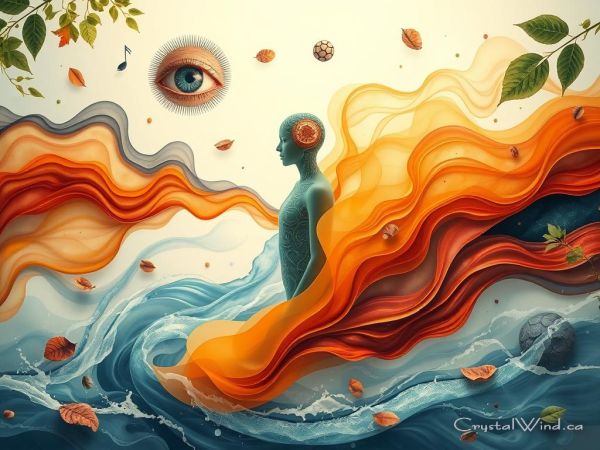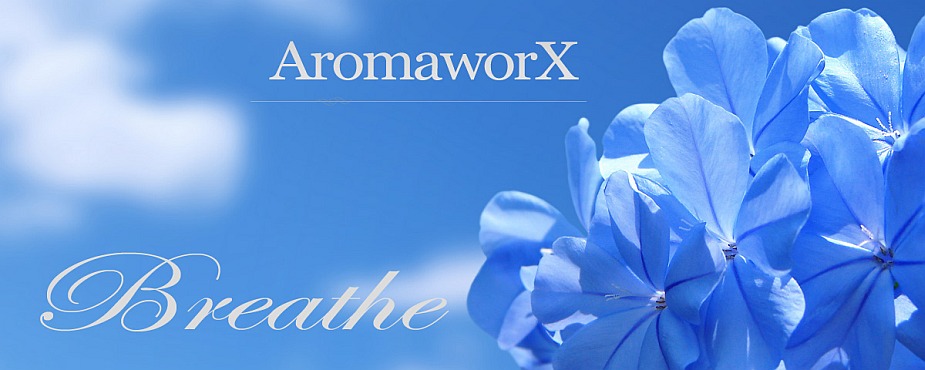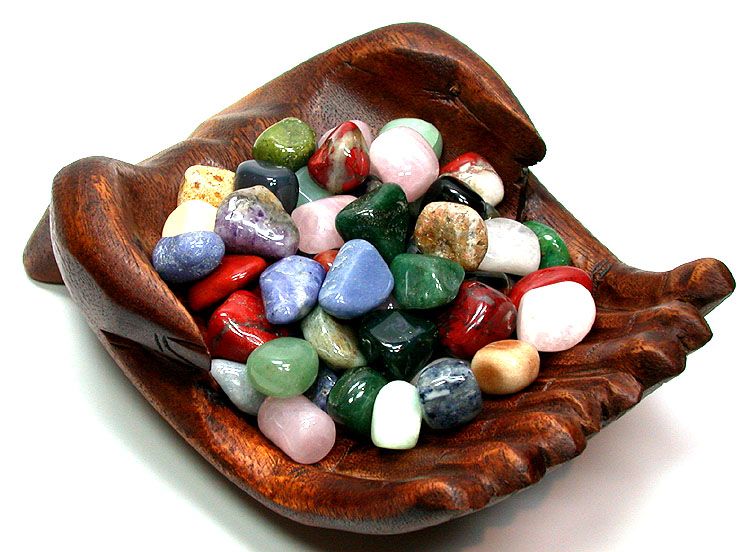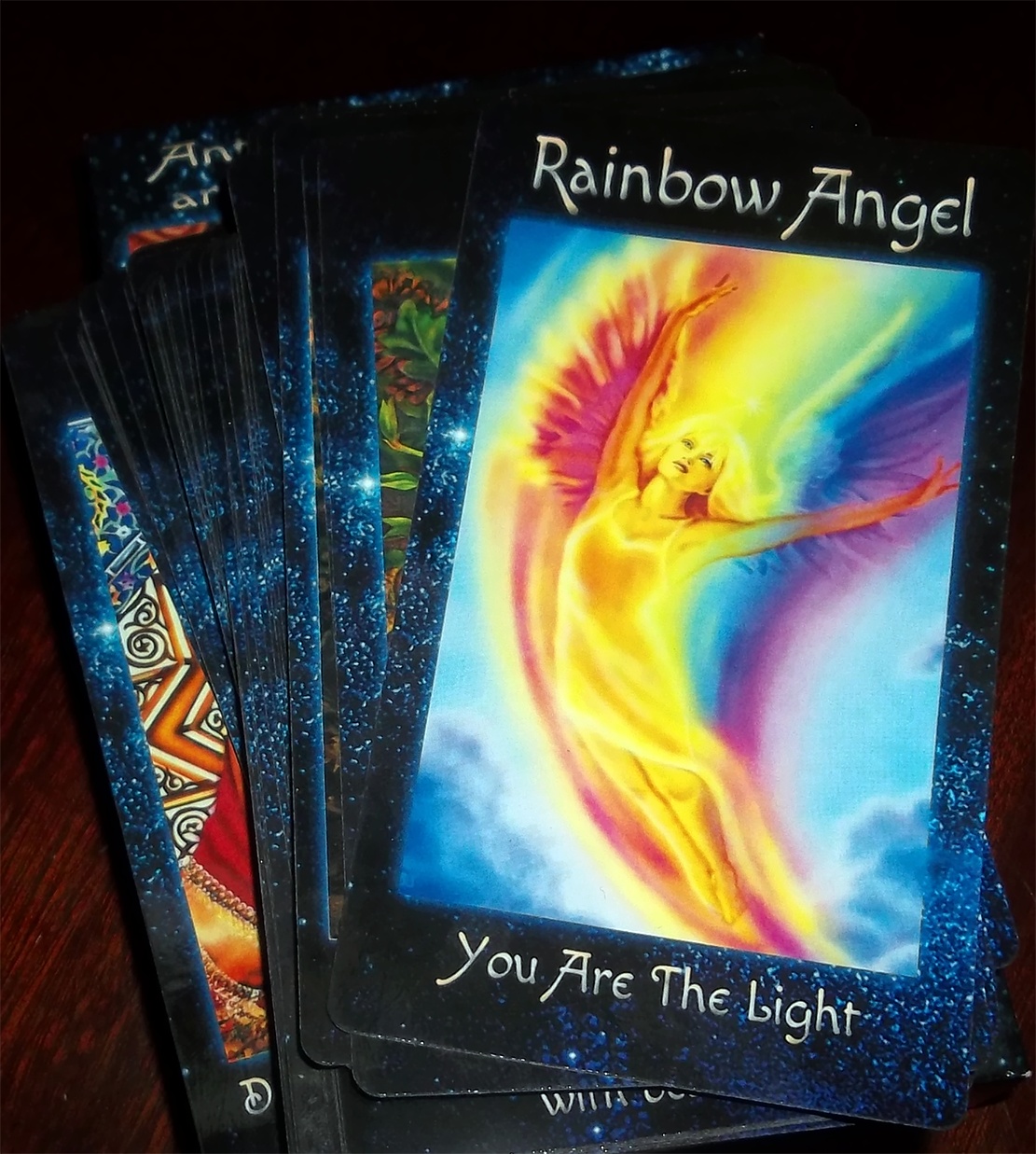Understanding Somatics: A Complete Guide to Body Awareness
- Details
- Written by And-El
- Views: 1848

Have you ever noticed how some people move with ease, while others seem stiff?
This might be because of Somatics, a way to connect the mind and body. In this guide, we'll explore Somatics, its basics, the science behind it, and how it can improve your life.
Somatics is more than just physical exercises. It's a path to understanding yourself better. By tuning into your body, you can discover new ways to move and feel. It helps you connect your mind and body in a harmonious way.
What is Somatics and How Does it Work
Somatics is a way of learning that connects the mind and body deeply. It helps people become more aware of their body's sensations and movements. This awareness can lead to better physical health, mental well-being, and improved movement.
Defining the Mind-Body Connection
Somatics shows that the mind and body are closely tied. Our thoughts and feelings affect our body, and our body's state affects our mind. Embodied learning through somatics helps us understand and use this connection to improve our lives.
Core Principles of Somatic Practice
Somatic practice is based on a few key ideas. It values being present in the moment, recognizing our unique body experiences, and believing in our body's healing power. By paying attention to our sensory perception, we can find and change harmful patterns in our body.
The Science Behind Somatic Awareness
Research in neuroscience and psychology is uncovering somatic awareness's benefits. Studies show it can make our brains more flexible, reduce stress, and improve how we move. Somatics offers a complete way to grow and change as a person.
The Historical Evolution of Somatic Practices
The roots of somatic practices go back to the early 20th century. Pioneers like Frederick Matthias Alexander and Moshe Feldenkrais were key. They saw a deep link between the mind, body, and movement.
The Alexander Technique by F.M. Alexander focused on body alignment and posture. It changed how we think about movement and physical education. Feldenkrais, in turn, created the Feldenkrais Method. It combined sensory awareness and neuromuscular learning to enhance movement and well-being.
"The body is the physical manifestation of the mind. By understanding and cultivating our body awareness, we unlock the key to transforming our lives."
These early somatic practices have evolved, thanks to figures like Moshe Feldenkrais and Ida Rolf. Now, we have many movement therapy techniques. They help us understand the mind-body connection better.
Today, somatics has merged with yoga, dance, and mindfulness. This has enriched our understanding of physical and mental health. The work of these pioneers continues to guide us in exploring the human experience through somatic awareness.
Benefits of Developing Body Awareness Through Somatics
Somatics opens up a world of benefits for both body and mind. It helps grow kinesthetic intelligence and strengthens the mind-body connection. This leads to better physical health, emotional well-being, and movement quality.
Physical Health Improvements
Practices like the Alexander Technique and Feldenkrais Method focus on physical health. They help people notice and fix issues like bad posture, stiff joints, and muscle tightness. This results in better posture, more flexibility, and less pain.
Mental and Emotional Well-being
Somatics deeply affects mental and emotional health. It helps people understand their body's signals better. This leads to better self-awareness, emotional control, and stress handling. It can make you feel happier, less anxious, and more satisfied with life.
Enhanced Movement Quality
Somatics teaches the value of smooth, efficient movements. It helps people move more fluidly and with better coordination. This improves sports performance, lowers injury risk, and makes daily activities easier.
Somatics is powerful because it connects the physical, mental, and emotional parts of us. It helps us live more fully, in harmony, and with joy.
Key Components of Somatic Movement Education
Somatic movement education is a holistic approach that explores the mind-body connection. It focuses on proprioception, interoception, and kinesthetic awareness. These elements help create an embodied learning experience, improving sensory perception and movement therapy.
Proprioception is the body's ability to sense its position and movement. It helps us move smoothly and precisely. Somatic practices enhance this skill, deepening our understanding of our physical selves.
Interoception is sensing sensations from within the body. It lets us feel our body's needs, like hunger or fatigue. Developing interoceptive skills helps us respond to our body's signals better, improving our well-being.
"Somatic movement education is not just about the physical body, but about the integration of the mind and body, the conscious and the unconscious, the internal and the external." - Bonnie Bainbridge Cohen, founder of Body-Mind Centering
Kinesthetic awareness is understanding movement and the body's space. It's key for better movement quality and injury prevention. Somatic practices improve this awareness, allowing for easier and more graceful movement.
Somatic movement education combines these components for a transformative experience. It helps us understand our physical, mental, and emotional selves better. This leads to personal growth and well-being.
Popular Somatic Methods and Techniques
In the world of somatics, many practices have emerged. Each offers a unique way to improve body awareness and well-being. The alexander technique, feldenkrais method, and body-mind centering are among the most well-known.
Frederick Matthias Alexander created the alexander technique. It focuses on proper posture and alignment. This method helps reduce tension and improve mobility.
It also helps people feel more balanced in their daily activities.
Moshe Feldenkrais developed the feldenkrais method. It aims to improve movement efficiency and self-awareness. Gentle, exploratory exercises are used to help individuals become more attuned to their body.
This approach allows people to develop new movement options and improve their overall functioning.
Body-Mind Centering
Bonnie Bainbridge Cohen created body-mind centering. It's a somatic practice that combines movement, touch, and anatomy. Practitioners study the body's systems and their relationships.
This helps them understand their physical and emotional states better. It leads to improved coordination, expression, and well-being.
These somatic practices believe in the power of body awareness and mindfulness. They help unlock an individual's full movement and health capabilities. By integrating these techniques into daily life, one can start a journey toward better physical, mental, and emotional health.
Integrating Somatic Practices into Daily Life

Body awareness through somatic practices can greatly improve our daily lives. By adding these techniques to our routines, we can enjoy better physical, mental, and emotional health. It's about finding simple, yet powerful, exercises that fit into our daily activities.
The body scan is a great mindfulness technique. It helps us notice the small feelings in our body. As we go about our day, we can stop and feel our body from head to toe. This increases our body awareness and helps us feel more connected and present.
"The body is the ground of all experience." - Thomas Hanna, founder of the Hanna Somatics method
Simple movement breaks are another way to use somatic practices. A quick stretch at your desk or a short walk can help. These breaks can become a part of our daily life, changing how we move and feel.
What's great about somatic practices is how flexible they are. We can do breathing exercises while waiting or move gently during our commute. By doing these practices, we start a journey of self-discovery. We find new energy, emotional strength, and overall well-being.
Common Challenges and Solutions in Somatic Practice
Starting a journey with somatic practices can change your life. Yet, it comes with its own set of challenges. You might face initial resistance, struggle to keep up with practice, or find it hard to see your progress. But, with the right approach, these hurdles can be overcome, leading to a rewarding somatic journey.
Overcoming Initial Resistance
One big challenge is the initial resistance you might feel. This can come from many places, like not knowing what to expect or feeling uneasy about getting to know your body better. To get past this, it's key to be open-minded and patient with yourself. Start with gentle movements and let your body lead the way. This helps you appreciate the power of somatic practices more deeply.
Building Consistent Practice Habits
Regular practice is essential for getting the most out of somatic practices. But, it can be hard to stick to it, with life getting in the way. To make practice a regular part of your day, try to fit it into your routine. This could be short mindfulness exercises during breaks or setting aside time for more focused practice. Using reminders, finding a practice buddy, or trying different somatic techniques can help make practice a consistent and rewarding part of your life.
Measuring Progress in Somatic Work
Tracking progress in somatic practices can be tricky, as the changes are often subtle. Instead of looking for external signs, focus on how you feel inside. Pay attention to changes in your body, emotions, and overall sense of well-being. Keeping a journal, setting goals, and celebrating small victories can help you see how far you've come with somatic practices.
"The journey of a thousand miles begins with a single step." - Lao Tzu
By facing challenges head-on and using effective strategies, we can deepen our understanding of somatic practices. We can build consistent habits and celebrate our growth. This holistic approach to learning through the body and kinesthetic intelligence can bring about profound changes in our physical, mental, and emotional health. It guides us towards a more balanced and fulfilling life.
The Role of Sensory Perception in Somatic Education

In somatic practices, sensory perception is key. It helps us improve body awareness and kinesthetic intelligence. This is how we unlock the deep power of somatic education.
Sensory perception is the base for somatic practitioners to learn and grow. By paying attention to small sensations, we can change how we move. This lets us explore our body awareness and kinesthetic intelligence in new ways.
"The body is the vehicle for awakening." - Buddha
Techniques like the Alexander Technique and Feldenkrais Method focus on sensory awareness. They use gentle, mindful movements to help us understand our body's signals. This way, we learn to listen to our body and emotions.
Developing this sensory perception opens up new paths for growth. It boosts our body awareness and kinesthetic intelligence. This approach helps us find a better balance between our mind and body. We can then move with more ease, grace, and awareness.
Somatics and Its Relationship to Other Body-Mind Practices
Looking into holistic health, we see how somatic practices blend with other mind-body fields. Yoga, tai chi, and meditation all share a key connection – the mind-body connection.
Somatics focuses on movement therapy and knowing our bodies. It makes other body-mind practices work better. For example, yoga or tai chi can get better with somatic awareness.
"Somatics is not just a practice – it's a way of being, a lens through which we can view and engage with the world around us."
Mindfulness in meditation also fits well with somatic work. It makes us more aware of our body's feelings. This can lead to deep insights and self-discovery.
Together, these practices weave a rich tapestry of well-being. Exploring somatic practices opens doors to growth, healing, and unity of mind, body, and spirit.
The Future of Somatics: Emerging Trends and Research
The field of somatic practices is growing fast, with exciting new trends. Somatic practices, movement therapy, and embodied learning are coming together. They are being used in many areas, like neuroscience, rehabilitation, and improving performance.
Neuroscience research is showing how somatic practices change the brain. These practices can rewire brain paths, improve body awareness, and help the brain adapt. This is good news for treating brain and motor disorders, and even for improving thinking skills.
In rehabilitation, somatic practices are becoming key tools for healing. By using movement therapy and embodied learning, patients can regain control over their bodies. This approach is changing how we see rehabilitation, showing how the mind and body are connected.
Also, somatic practices are helping people perform better. Athletes, artists, and others are using them to improve their skills. These practices help blend physical, mental, and emotional aspects, pushing human limits.
Looking ahead, somatics will likely see more research and use in different fields. We'll understand more about how embodied learning changes us. Somatics has the power to help people tap into their body's wisdom, leading to a more balanced life.
Conclusion: Embracing the Somatic Journey
Our journey through Somatics has shown us its deep impact on our well-being. It helps us understand the mind-body connection better. This understanding lets us unlock our physical and emotional strengths.
Looking to boost your health, mental state, or body awareness? Somatics can guide you. It helps us find ourselves and grow. We learn to move better, ease pain, and value our body's wisdom.
Now, think about adding Somatic practices to your daily routine. There are many techniques like the Alexander Technique and Feldenkrais Method. Each offers special insights and benefits. By starting this journey, you'll improve your health and understand your body, mind, and spirit better.
This article is written exclusively by And-El of CrystalWind.ca © 2024 crystalwind.ca. You may share my articles as long as you provide proper credit to the author, include a link to the original article, and do not alter the content. Commercial use is prohibited without permission.
And-El: The Archangelic Visionary Bridging Business and Spirituality
And-El combines spiritual wisdom with entrepreneurial expertise to guide humanity toward higher consciousness. With deep ties to Archangels, ancient civilizations, and Indigenous wisdom, his journey blends psychic mastery, crystal healing, and astrological insight. As a leader in ethical business and conscious marketing, And-El pioneers innovative strategies, merging spiritual ethics with modern technology to inspire growth and transformation.
Liked this article? Dive deeper into personal growth and wellness! Check out CrystalWind.ca for spiritual wisdom or explore AromaWorx.ca for natural well-being tips. Spread the positivity—share this with friends on their happiness journey!
Let’s Chat! Drop Your Thoughts Below! ![]()
Disclaimer Health
All post and information provided within this blog is for educational and informational purposes only, and is not to be construed as medical advice or instruction. No action should be taken solely on the contents of this website. Please consult with your healthcare professional before making any dietary or lifestyle changes or taking supplements that may interfere with medications. Any products or information discussed are not intended to diagnose, prevent, treat or cure any illness, disease or lifestyle. Please consult your physician or a qualified health professional on any matters regarding your health and wellbeing or on any opinions expressed within this website.
Latest Articles
Dive into the Mystical World of the Crystal Wind Oracle Deck!
Get All the Enchanting Details Now!
NEW Expanded Boxed Edition!
Now with 58 Cards for Richer Wisdom!

Imagine a world of inspiration and healing, free for all—made possible by YOU!
Donate Now—Ignite the Magic at CrystalWind.ca!

Epilepsy - Finding A Cure
Your donation can make a difference!
Help us find a cure – donate now!
Unlock Your Light: Join Lightworkers Worldwide on CrystalWind.ca!
Follow Us!
Featured This Month
Rutilated Quartz
The Energy Buster Stone Rutilated Quartz is an illuminator for the soul, pr... Read more
Deer Medicine
The Deer holds a revered place in Native American traditions, embodying a powe... Read more
Crystal Gem: Grids and Gridding
What are Crystal Gem Grids? They are tools for empowerment, for blessings, ... Read more
Gemini Mythology
The Legend Behind the Gemini Zodiac Sign The roots of constellation stories... Read more
A Simple Summer Solstice Ritual with Crystal…
June 20, 2016 is this year’s summer solstice, marking&n... Read more
Litha Sabbat - The Summer Solstice
Gardens are blooming, and summer is in full swing. Fire up the barbeque, turn ... Read more
Litha - The Midsummer Solstice
The Litha festival is one of the lesser Sabbats of the Witches annual calend... Read more
Sun in Gemini
Sun in Gemini May 21 through June 20 An Overview of Sun Sign Characteristic... Read more
The Hawthorn Tree - May 13 - June 9
The Hawthorn Tree – May 13 to June 9 In Celtic tree astrology, the Hawthorn ... Read more
































































































































































